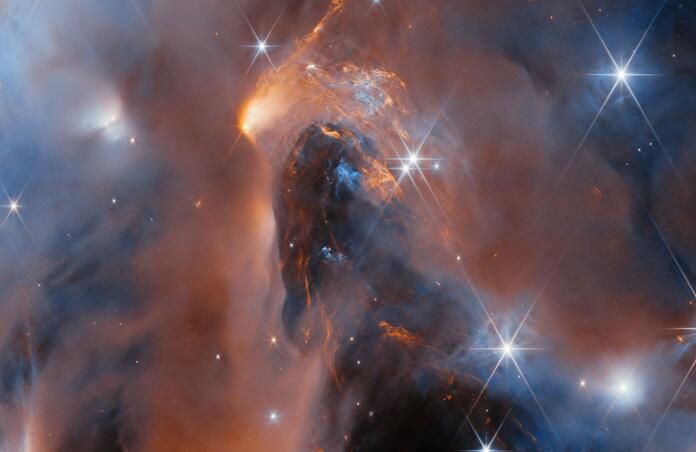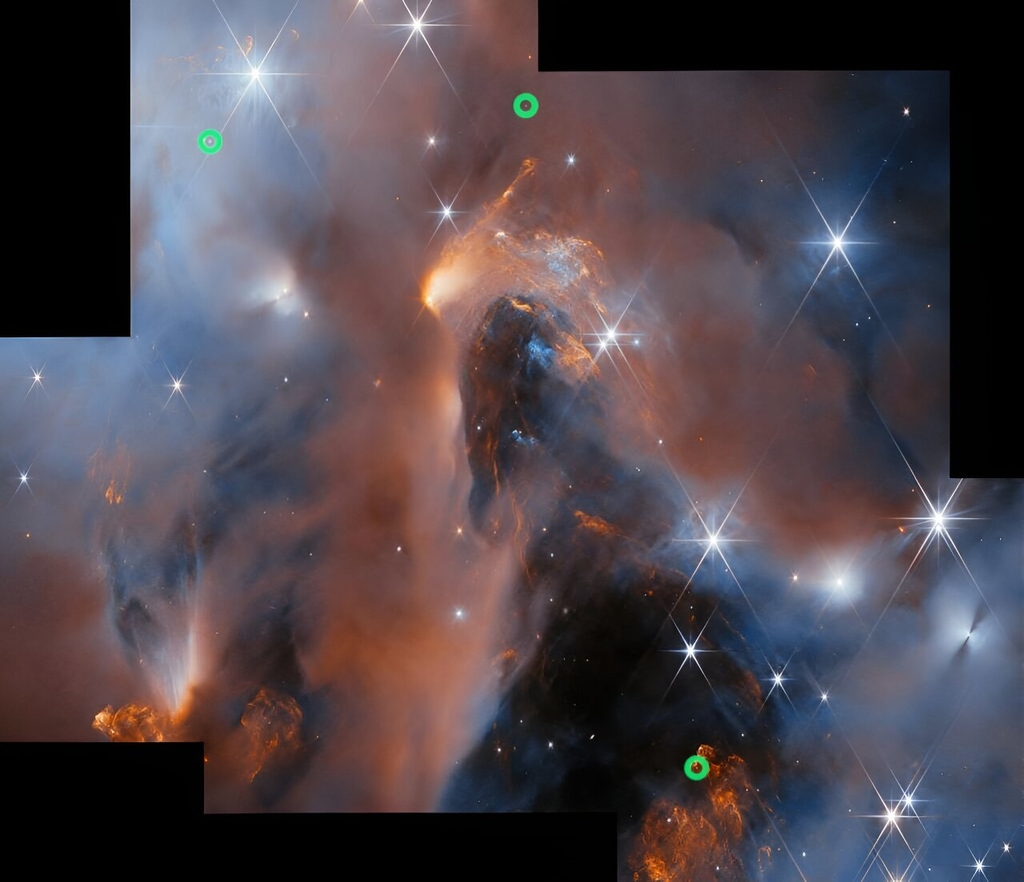Webb team discovers six new free floating planet candidates

The detection of six free floating planet candidates by a team using JWST could provide insight into the formation process of stars and planets. These rogue objects are planet-sized objects that were either kicked out of their planetary system or formed in interstellar space.
First observed in 2000, hundreds of free-floating planet candidates have been detected. Such objects aren’t attached to any particular star, wandering through our galaxys interstellar medium. Estimates on the number of these objects reach upward of 2 trillion in the milky way alone.
The team discovered the six new candidates in an unsuspecting region, during Webbs deepest survey of the young nebula NGC 1333. This star forming cluster is located 1000 light years away in the Perseus constellation.
Most free-floating planet candidates are discovered using microlensing, whereby the gravitational force of a massive object in the foreground affects the curvature of spacetime around it, amplifying light from a more distant object in the background. Other candidates are found through direct imaging, which involves finding brown dwarfs – objects between a star and planet – and massive planets by detecting the infrared radiation from their atmospheres.

The team used data from Webbs Near Infrared Imager and Slitless Spectrograph (NIRISS), measuring the spectrum of every object observed in the stellar cluster. From this, the spectra of 19 previously observed brown dwarfs were reanalysed, providing the discovery of a new brown dwarf with a planetary mass companion. This new brown dwarf was a rare catch, challenging the theory behind the formation of binary systems.
However, even more unbelievable was the detection of six rogue planets with 5-10x the mass of Jupiter, also known as super-Jupiters. This group are some of the lowest mass rogue planets found, forming in the same way as brown dwarfs and stars. The objective of the Deep Spectroscopic Survey for Young Brown Dwarfs and Free Floating Planets was to investigate massive objects that don’t reach a high enough mass to become stars.
The observations taken by Webb saw no detection of objects lower than 5 Jupiter masses, despite it being more the capable of probing this parameter space. The lack of detection suggests that stellar objects lighter than this are more likely to form similarly to planets.
"We are probing the very limits of the star-forming process. If you have an object that looks like a young Jupiter, is it possible that it could have become a star under the right conditions? This is important context for understanding both star and planet formation," explains lead author Adam Langeveld, an assistant research scientist in the department of physics and astronomy at John Hopkins university.
The lightest of the bunch weighed in at around 5 Jupiter masses and had a particularly interesting feature: a debris ring. Generally, during the early stages of formation dust and gas fall into a disk, so the presence of a debris ring indicates it formed similarly to stars. However, debris disks are also a birthing place for planetary systems, therefore this may also suggest that these objects can potentially form their own satellites. If so, these massive planets could form a nursery for a mini planetary system.
"It turns out the smallest free-floating objects that form like stars overlap in mass with giant exoplanets circling nearby stars. It's likely that such a pair formed the way binary star systems do, from a cloud fragmenting as it contracted. The diversity of systems that nature has produced is remarkable and pushes us to refine our models of star and planet formation… Our observations confirm that nature produces planetary mass objects in at least two different ways—from the contraction of a cloud of gas and dust, the way stars form, and in disks of gas and dust around young stars, as Jupiter in our own solar system did." Explains Ray Jayawardhana, John Hopkins Provost, astrophysicists and senior author of the study.
The team’s plan is to conduct follow up studies of the planet’s atmospheres using Webb, comparing these to brown dwarfs and gas giants. Additionally, searching the star forming region for other objects with debris disks to study the possibility of miniature planetary systems. This data will help astronomers to constrain their estimates on the number of free-floating planets in our galaxy. Observations suggest that these objects account for around 10% of the celestial bodies in the cluster observed. Therefore, applying this to current estimates of the number of stars and planets in the galaxy gives a range of 90 to 360 billion rogue planets floating freely in our galaxy.
--
Cover image: ESA/Webb, NASA & CSA, A. Scholz, K. Muzic, A. Langeveld, R. Jayawardhana
Journal source: Adam B. Langeveld et al, The JWST/NIRISS Deep Spectroscopic Survey for Young Brown Dwarfs and Free-Floating Planets, arXiv (2024). DOI: 10.48550/arxiv.2408.12639
